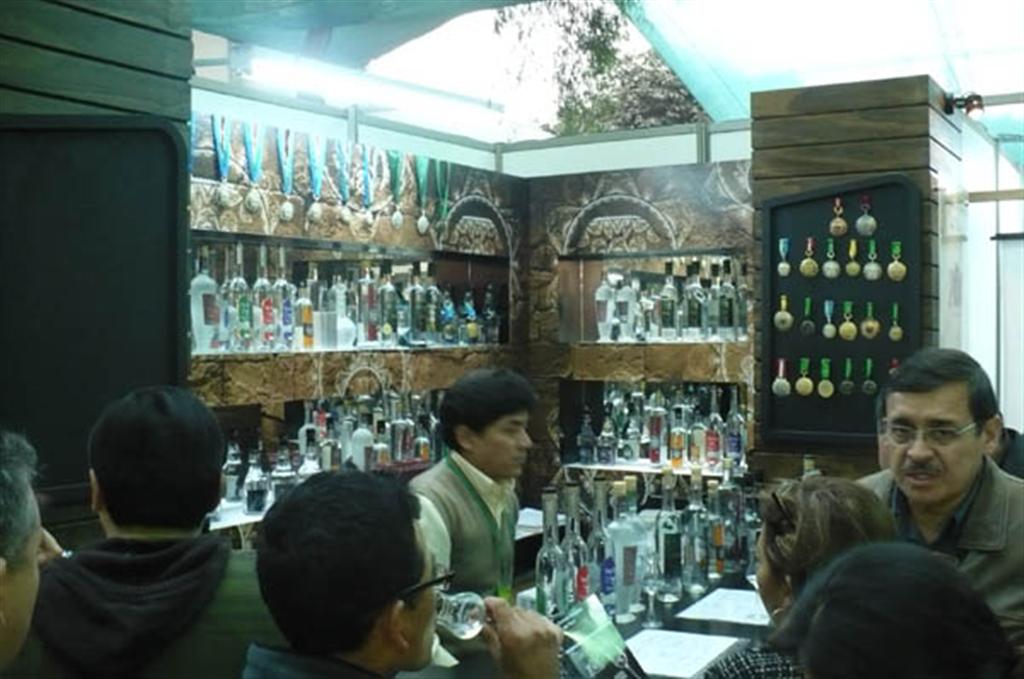Sérvulo Gutiérrez Alarcón
Sérvulo Gutiérrez Alarcón was born in February 1914, the fifth son in a numerous family. His infancy went by between school and collaborating in the restaurant that his father owned.
a numerous family. His infancy went by between school and collaborating in the restaurant that his father owned.
Sérvulo Gutiérrez Alarcón was born in February 1914, the fifth son in
 a numerous family. His infancy went by between school and collaborating in the restaurant that his father owned.
a numerous family. His infancy went by between school and collaborating in the restaurant that his father owned.
The death of his mother forced the teenager to move to Lima, where he was set up in the house of his brother Alberto, restorer, in the big house which is currently the seat of the Peña Hatuchay in Rimac.
In the Guiterrez shop they also restored haucos. This is the remote origin of the scandal that years later, provoked by the appearance in “Life” of a huaco, made by our artist, which was claimed to be a magnificent example of pre-Colombian pottery.
Following another brotherly tradition, initiated by his eldest brother, Tarugo, novice bullfighter and boxer, Servulo began to practice the sport of boxing.
Thanks to his boxing qualities, in 1934 he was chosen to form part of the Peruvian team that would attend the South American Championship in Cordoba, Argentina.
In Buenos Aires he married Zulema Palomieri, with whom he would have a daughter, Lucila.
In the Guiterrez shop they also restored haucos. This is the remote origin of the scandal that years later, provoked by the appearance in “Life” of a huaco, made by our artist, which was claimed to be a magnificent example of pre-Colombian pottery.
Following another brotherly tradition, initiated by his eldest brother, Tarugo, novice bullfighter and boxer, Servulo began to practice the sport of boxing.
Thanks to his boxing qualities, in 1934 he was chosen to form part of the Peruvian team that would attend the South American Championship in Cordoba, Argentina.
In Buenos Aires he married Zulema Palomieri, with whom he would have a daughter, Lucila.
However, his stay in the capital was kept short and in 1938 he arrived to Paris, where he struck up relationships with Peruvian artists and intellectuals. During this same period, in brawl of which there are many versions, he was cut by a knife that would forever mark his face.
As it did many others, the Second World War would distance him from Europe and in 1940 he returned to Peru with Claudine Fitte, a French-Argentine who would have a great influence on the artist’s still formative years. With her he lived between Lima and Buenos Aires, a city where he would attend classes given by painter Emilio Petoruti. These classes were the only formal artistic education that there is knowledge of him having.
In 1946 he separated from Claudine and established himself in Lima. He became one of the great entertainers of the active bohemian lifestyle in Lima in the 1950s.
Portraits, landscapes, Christs and Saint Roses were transformed by explosions of color worked with a spatula, a paint brush handle, or even his fingers and nails. His trail in local public areas was signaled by murals, tablecloths and napkins used as canvasses, pieces of paper, vouchers and menus.
The intensity of his life, which parallels his work, consumed him, and in July 1961 he died at the young age of 47. That same year, the Institute of Contemporary art organized an exhibit in his honor.
Today, almost four decades after his death, the passing of time has not erased him from the collective memory of a figure who one day defined himself as a Prague Prince.
As it did many others, the Second World War would distance him from Europe and in 1940 he returned to Peru with Claudine Fitte, a French-Argentine who would have a great influence on the artist’s still formative years. With her he lived between Lima and Buenos Aires, a city where he would attend classes given by painter Emilio Petoruti. These classes were the only formal artistic education that there is knowledge of him having.
In 1946 he separated from Claudine and established himself in Lima. He became one of the great entertainers of the active bohemian lifestyle in Lima in the 1950s.
Portraits, landscapes, Christs and Saint Roses were transformed by explosions of color worked with a spatula, a paint brush handle, or even his fingers and nails. His trail in local public areas was signaled by murals, tablecloths and napkins used as canvasses, pieces of paper, vouchers and menus.
The intensity of his life, which parallels his work, consumed him, and in July 1961 he died at the young age of 47. That same year, the Institute of Contemporary art organized an exhibit in his honor.
Today, almost four decades after his death, the passing of time has not erased him from the collective memory of a figure who one day defined himself as a Prague Prince.
Translated by Katrina Heimark
Pisco bilingual magazine
Pisco bilingual magazine

No hay comentarios:
Publicar un comentario